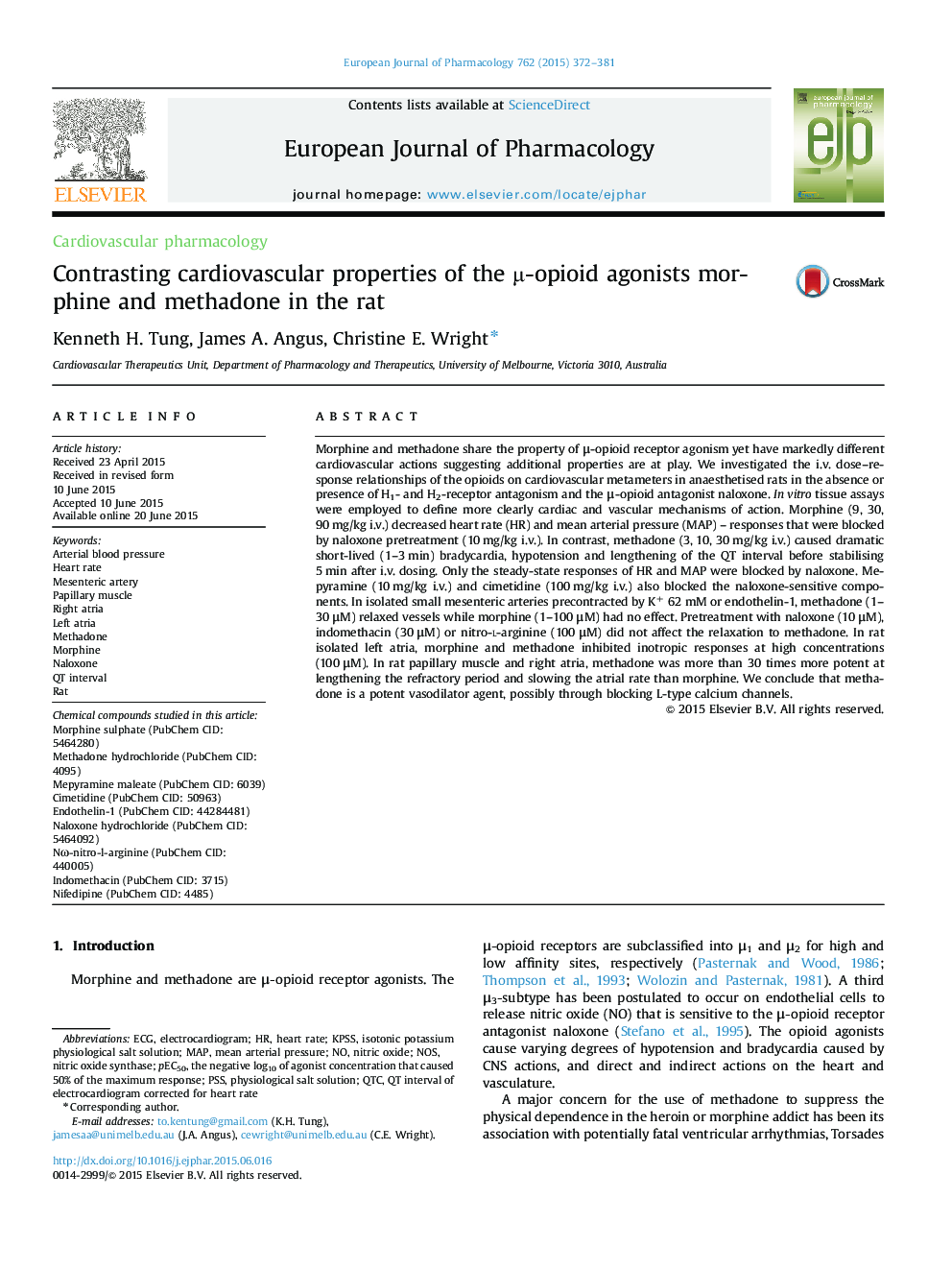| Article ID | Journal | Published Year | Pages | File Type |
|---|---|---|---|---|
| 5827229 | European Journal of Pharmacology | 2015 | 10 Pages |
Abstract
Morphine and methadone share the property of μ-opioid receptor agonism yet have markedly different cardiovascular actions suggesting additional properties are at play. We investigated the i.v. dose-response relationships of the opioids on cardiovascular metameters in anaesthetised rats in the absence or presence of H1- and H2-receptor antagonism and the μ-opioid antagonist naloxone. In vitro tissue assays were employed to define more clearly cardiac and vascular mechanisms of action. Morphine (9, 30, 90 mg/kg i.v.) decreased heart rate (HR) and mean arterial pressure (MAP) - responses that were blocked by naloxone pretreatment (10 mg/kg i.v.). In contrast, methadone (3, 10, 30 mg/kg i.v.) caused dramatic short-lived (1-3 min) bradycardia, hypotension and lengthening of the QT interval before stabilising 5 min after i.v. dosing. Only the steady-state responses of HR and MAP were blocked by naloxone. Mepyramine (10 mg/kg i.v.) and cimetidine (100 mg/kg i.v.) also blocked the naloxone-sensitive components. In isolated small mesenteric arteries precontracted by K+ 62 mM or endothelin-1, methadone (1-30 μM) relaxed vessels while morphine (1-100 μM) had no effect. Pretreatment with naloxone (10 μM), indomethacin (30 μM) or nitro-l-arginine (100 μM) did not affect the relaxation to methadone. In rat isolated left atria, morphine and methadone inhibited inotropic responses at high concentrations (100 μM). In rat papillary muscle and right atria, methadone was more than 30 times more potent at lengthening the refractory period and slowing the atrial rate than morphine. We conclude that methadone is a potent vasodilator agent, possibly through blocking L-type calcium channels.
Keywords
pEC50Nifedipine (PubChem CID: 4485)QTcIndomethacin (PubChem CID: 3715)KPSSNaloxone hydrochloride (PubChem CID: 5464092)NOSLeft atriaPSSQT intervalelectrocardiogramECGRight atriaMesenteric arteryHeart ratepapillary muscleArterial blood pressuremean arterial pressureMethadonephysiological salt solutionmorphineRatNaloxonemapNitric oxidenitric oxide synthase
Related Topics
Life Sciences
Neuroscience
Cellular and Molecular Neuroscience
Authors
Kenneth H. Tung, James A. Angus, Christine E. Wright,
